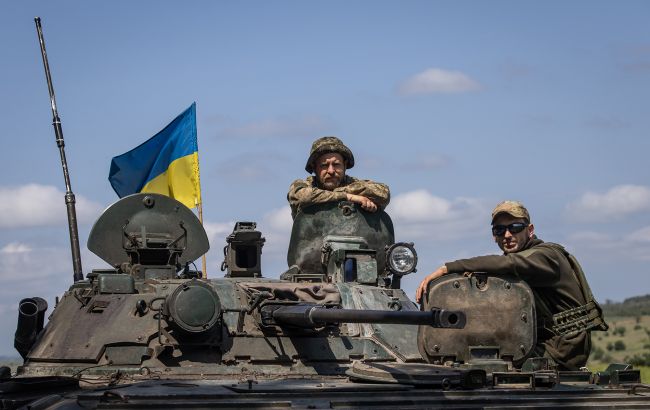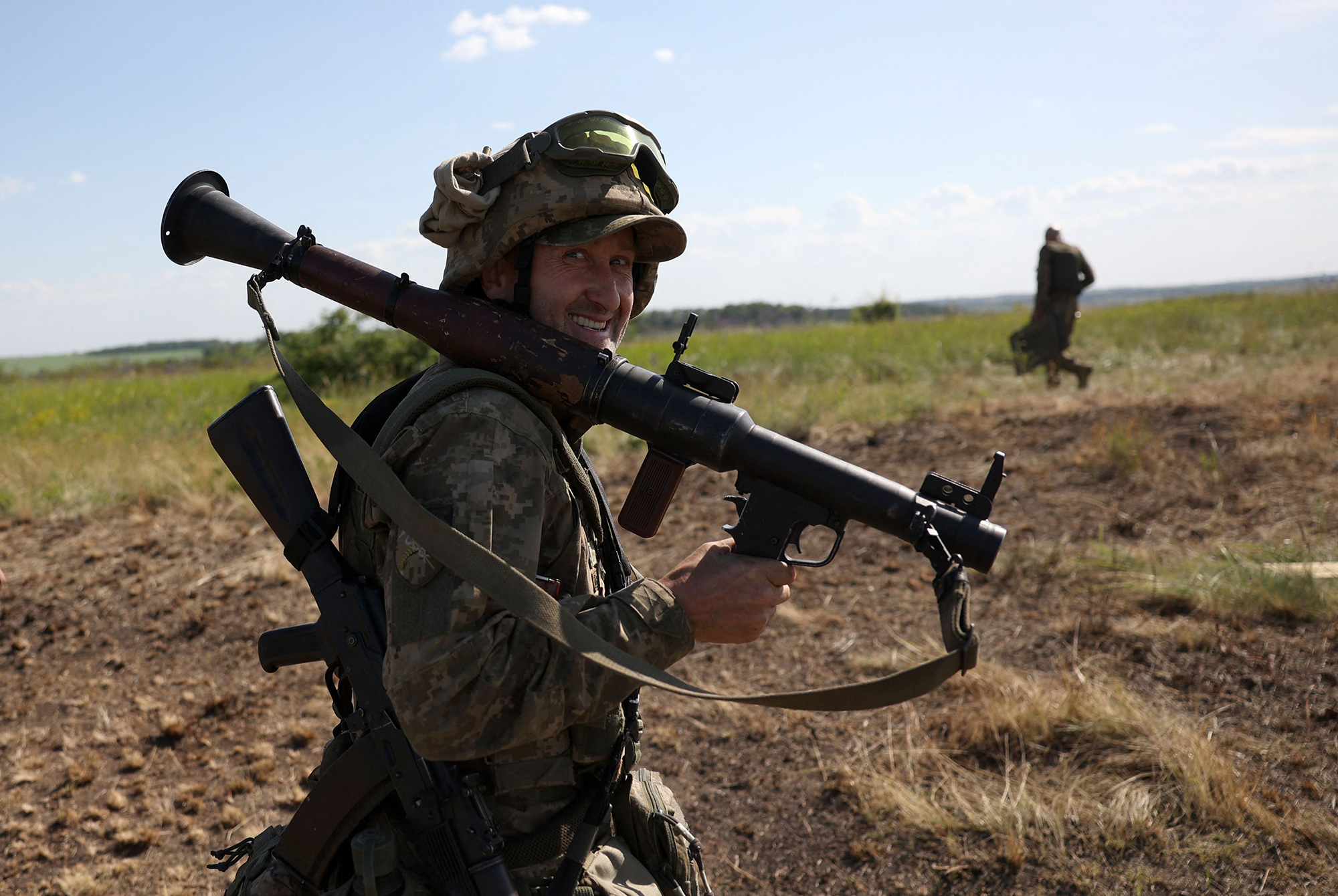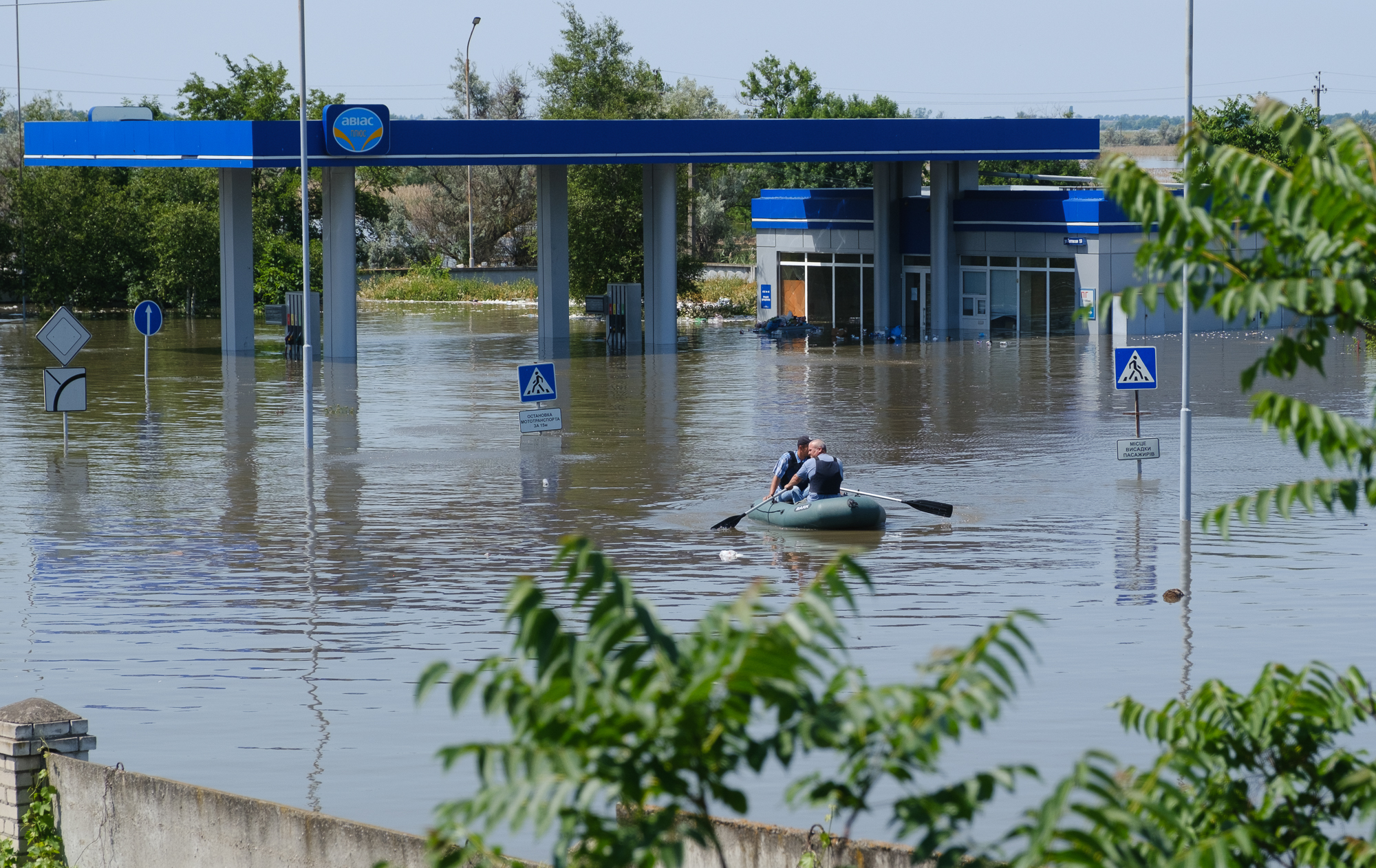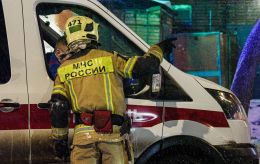Ukrainian counteroffensive: What's happening on the frontline and what to expect
 Ukrainian Armed Forces has started offensive actions on several fronts (Photo: Getty Images)
Ukrainian Armed Forces has started offensive actions on several fronts (Photo: Getty Images)
Since the early days of June, Ukrainian forces have launched offensive operations in the Donetsk and Zaporizhzhia regions. Putin has already called it a major counteroffensive, claiming that he did not achieve his objectives. Similar statements have been echoed by Russian propaganda. So, what is happening on the frontline, and the prospects of the Ukrainian advance?
The Ukrainian army has started offensive actions on several fronts. Western and Russian media call it the "major counteroffensive", which had been the subject of various speculations and forecasts even before its commencement.
The Ukrainian government is more cautious in its wording, using different terms such as "reconnaissance-in-force", "probing actions", or "forming operations." Nevertheless, all of these can be considered the initial stage of our offensive.
According to the General Staff of Ukraine, in the past ten days, Ukrainian defense forces have regained control of 90 square kilometers of territory and seven populated areas. This is not on the same scale and pace as the rapid breakthrough in Balakliia, but one should not expect this offensive to resemble the operations in Kharkiv or Kherson.
On one hand, Ukraine has been preparing its personnel for several months and urging its Western partners to provide the necessary ammunition. On the other hand, Russians have not wasted any time. They have established a layered defense, increased troop density on the frontlines, and learned from their mistakes. Therefore, the decisive and toughest battles are still ahead.
Where the Ukrainian army is advancing
On approximately June 4, the media and social networks started reporting the Ukrainian military's active operations on three fronts. These territories are located in the Zaporizhzhia and Donetsk regions in Pryazovia. However, not all of these fronts have seen the same level of success in the ongoing battles.
To the west of Orikhove, Ukrainian Forces managed to capture the village of Lobkove and approach the enemy’s first line of defense near Piatykhatky. Russians are attempting to counter our advancements in this area.
Another direction is southeast of Orikhove, Mala Tokmachka area. It was there that the footage, falsely claimed by Russian Telegram channels as evidence of the destruction of "100,500 units" of Western armored vehicles (Bradley and Leopard), was filmed. While the defense forces did suffer losses in their attempt to advance in this direction, the casualties are significantly fewer than depicted by Kremlin propaganda.
According to Oryx, Ukrainian troops have lost one Leopard 2A4, three Leopard 2A6, and 16 Bradley vehicles. Some of this equipment could potentially be sent for repairs. However, it should be noted that the loss of equipment during active combat is inevitable.

Ukrainian troops managed to push the enemy 7 km back in Velyka Novosilka area (Screenshot: DeepState map)
These two directions might be aimed at potential advances toward Tokmak and later on to Melitopol. However, the Ukrainian army's greatest success has been achieved in another area of the southern front, at the junction of the Zaporizhzhia and Donetsk regions. Russian media refers to this area as the "Vremivka salient" based on the name of the village Vremivka, where the occupiers' positions were wedged.
By striking the flanks of this offensive, Ukrainian troops were able to dislodge Russians from the villages of Levadne and Novodarivka, and subsequently advance along the Mokri Yaly River. The enemy was forced to abandon four more settlements – Neskuchne, Storozheve, Blahodatne, and Makarivka. Considering that the Russian retreat was not entirely organized, it seems that the opponent did not anticipate an attack from this direction.
There have been no reports of advances on the "salient" in recent days. The front line currently runs along Novodarivka-Rivnopil-Staromykhailivka-Urozhainе-Novodonetske, where active fighting continues. The occupiers have deployed their reserves there, attempting to push the defense forces back from Staromykhailivka and Urozhainе, which marks the main Russian line of defense.
The offensive actions in this direction could be either toward Berdiansk (as officially indicated in reports) or Mariupol. Additionally, the Ukrainian army is launching counterattacks in the Avdiivka area and continuing movements on the flanks of Bakhmut near Berkhivka and Klishchiivka. Russian forces are also attempting offensives around Avdiivka, Marinka, and Bilohorivka.
 Ukrainian army carries out forming operations and looks for weak points in the enemy's defense (Photo: Getty Images)
Ukrainian army carries out forming operations and looks for weak points in the enemy's defense (Photo: Getty Images)
The sources in military circles suggest that Ukraine's offensive actions will not be limited to a single operational zone. The main strike will be directed toward the area that offers the greatest potential for success and favorable conditions. After the destruction of the Kahovska hydroelectric power plant, the occupiers decided to divert part of their troops to reinforce the Donetsk and Luhansk regions. By monitoring Russian pro-war publications, it can be concluded that the aggressor expects an intensification of hostilities near Vuhledar, as well as along the Kupiansk-Svatove-Kreminna direction.
Has Ukraine launched a major offensive?
The Ukrainian command has currently engaged no more than three brigades out of the 20 that were prepared for the offensive. Their task is to exploit weak points in the enemy's defense rather than conducting a breakthrough with overwhelming force. Another evident objective of the current attacks in the south is to draw out Russian reserves. Some of these reserves have already been committed to battle. The more enemy reserves are destroyed during the initial stages of the offensive, the more challenging it will be for them to defend, particularly when it comes to breaching the main defensive line. It is premature to label the battles occurring in the South as a major offensive and assess its "results" at this stage.
However, a lightning-fast advance in the south should not be expected. Russians have been preparing for the battle in the Zaporizhzhia region since last autumn, constructing a multi-level defense, particularly around Tokmak and Melitopol. Hence, this offensive operation could last for weeks or even months. The destruction of the Kahovska HPP following the initial Ukrainian attacks in the south demonstrates that Russians are prepared to resist using any means necessary.
Moscow anticipated that after the Ukrainian forces advanced in the Zaporizhzhia region, they would attempt to cross the Dnipro River and conduct a landing on the left bank of Kherson. This would have forced the occupiers to fight on two fronts. The flooding of the Dnipro River, at least for a certain period, eliminated this threat for them.
Ministry of Defense reports that Russians undermine small hydro-technical structures in the Zaporizhzhia and Kherson regions every day. According to Moscow's plan, the marshland formation is intended to impede the movement of Ukrainian forces. Recently, the occupiers destroyed a dam across the Mokri Yaly River in the village of Kliuchove, precisely on one of the paths of the Defense Forces' advancement.
 Kherson flooding consequences (Photo: Vitalii Nosach/RBC-Ukraine)
Kherson flooding consequences (Photo: Vitalii Nosach/RBC-Ukraine)
Moreover, the enemy began to intensively use strike aviation in the south, significantly complicating progress in the open steppe. Ukraine's air defense systems are insufficient to provide comprehensive coverage of both the front-line and rear cities. This was precisely the calculation behind the Kremlin's actions. Since the end of April, Moscow has been systematically shelling various regions of Ukraine to force the Ukrainian command to withdraw air defense systems from the front line. Simultaneously, Russians attempt to target rear ammunition depots to disrupt our offensive.
In May, the enemy launched around 198 rockets into Ukrainian territory. Sources in military circles claim that Moscow has managed to achieve its highest levels of missile production since the start of the war. In May, Russians manufactured approximately 100 units of “Kalibr”, Kh-101, Kh-32, “Iskander”, and “Kinzhal” missiles, as well as a similar number of shorter-range missiles like Kh-59, Kh-35, Kh-31, and others. In summary, Russia is gradually succeeding in adapting and deploying the capabilities of its military-industrial complex despite international sanctions, which is very bad news for us.
Currently, it is too difficult to decide whether the Ukrainian offensive will become a turning point in the war. However, it will, in one way or another, determine its further course. The absence of success on the battlefield only strengthens the arguments of "peaceful" politicians who strive to quickly end everything through negotiations. If Ukraine manages to shift the front line, it will maintain the momentum of Western support and allow for the continued struggle to reclaim the territories occupied by the enemy.
However, approximately 20% of Ukraine remains under occupation. One, even a completely successful, offensive operation does not guarantee an end to the war or the liberation of such a vast territory this year. Therefore, the best "recipe" under these circumstances is to maintain restrained optimism.

